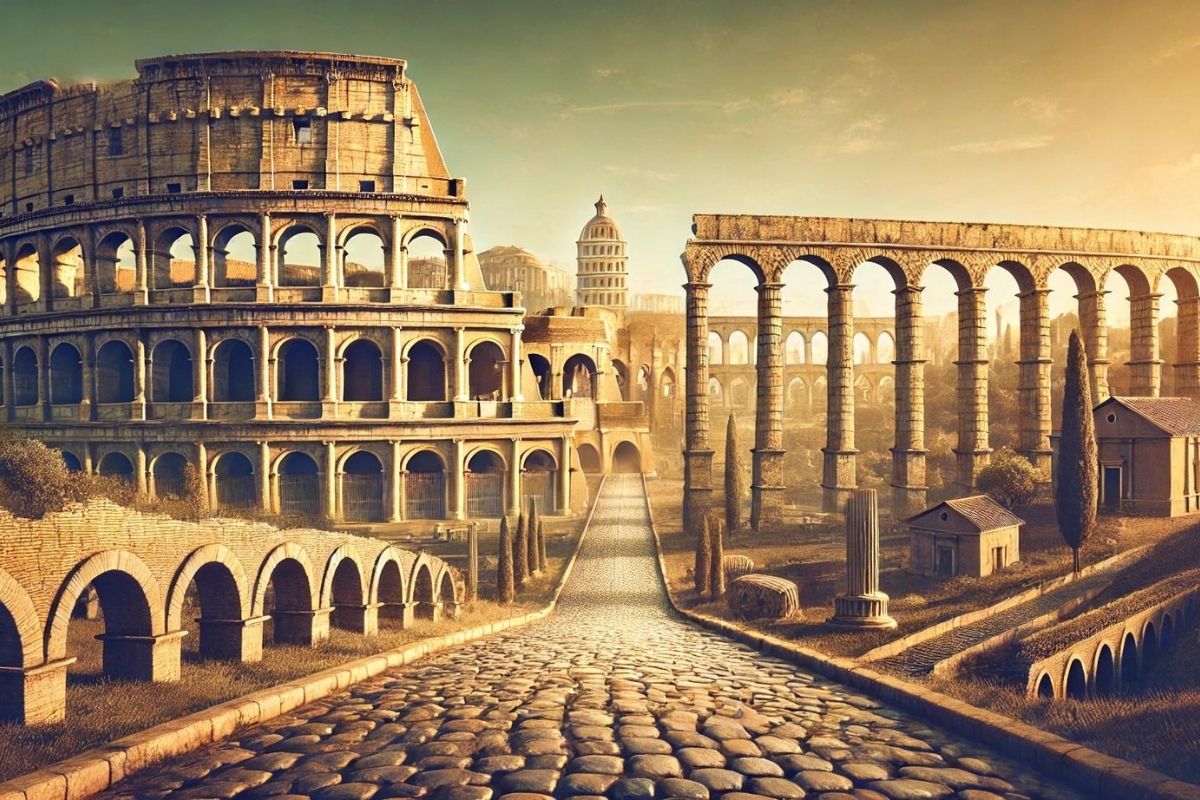From the goliath Colosseum to the rambling organization of streets that jumbled the realm, the Ancient Roman Engineering Marvels stand as a demonstration of the inventiveness and ground breaking of Roman designers. Their developments were fantastic and outwardly noteworthy as well as permeated with advancement and utility, mirroring the embodiment of Roman refinement. This article dives into a portion of these design and engineering accomplishments, investigating how they were constructed and why they stay huge throughout the entire existence of engineering.
The Authority of Roman Concrete
One of the central components of Roman engineering was their progressive utilization of cement. This material was significant in the development of getting through structures that could endure everyday hardship and the components. Roman cement varied essentially from the present cement, principally because of its fuse of volcanic debris, which assisted the material oppose with watering and natural wear.
The solidness of Roman cement is best exemplified by the Pantheon, a design eminent for having the world’s biggest unreinforced substantial vault even today. The creation of the substantial utilized in the Pantheon considered a lighter but sturdier construction, exhibiting the Romans’ high level comprehension of material science. The procedure of making vaulted roofs and curves from this substantial not just upheld the heaviness of these huge designs yet in addition gave the structural opportunity to make bigger and more mind boggling public spaces than any other time in recent memory.
The life span of these designs, a large number of which actually stand in resistance of the centuries, is an immediate impression of the refinement and viability of Roman substantial innovation. It established a groundwork that would impact development procedures into the indefinite future.
The Roman Reservoir conduits: Carrying Life to Cities
Maybe no other ancient Roman development talks more to their engineering ability than the water systems. Intended to ship water from far off sources into urban areas and towns across the domain, the reservoir conduits were vital in advancing metropolitan development and general wellbeing. The engineering behind these streams included exact computations to guarantee a consistent, gravity-fueled progression of water across some of the time many miles.
The Water Claudia, one of the most aggressive reservoir conduit projects, extended north of 45 miles and provided the city of Rome with new water. This was not just utilitarian yet a presentation of force and public help, an exemplification of the Roman obligation to the government assistance of its residents. The reservoir conduits were built utilizing a progression of curves, which were both useful in supporting the heaviness of the water and stylishly satisfying.
This organization of water channels upheld the everyday requirements of residents as well as filled the showers, wellsprings, and lavatories of Rome, advancing a degree of sterilization that wouldn’t be recreated in Europe until well into the cutting edge period.
Roman Streets: Availability and Realm Building
“All streets lead to Rome” – this colloquialism typifies the broad organization of streets that the Romans worked across their realm. The streets were pivotal for the fast organization of military armies, monetary soundness through exchange, and compelling organization. The development of these streets was an accomplishment of engineering, including profound establishments, exact slopes, and layers of materials to guarantee sturdiness.
Perhaps of the most renowned street, the By means of Appia (Appian Way), extended from Rome to Brindisi and worked with exchange and military developments all through the Roman Republic and Realm. The streets were so very much built that some are still being used today, a demonstration of Roman engineering foreknowledge and comprehension of materials. The essential design of these streets, combined with their toughness, not just worked with the extension and upkeep of the Domain yet in addition reinforced different societies under Roman administration.
The Colosseum: An Image of Engineering Grandeur
The Roman Colosseum, a gigantic stone amphitheater in the focal point of Rome, is maybe the most notable image of Roman design and engineering. Referred to authoritatively as the Flavian Amphitheater, it was fit for seating 50,000 observers and was utilized for gladiatorial challenges, public scenes, and dramatic exhibitions. Its plan included elaborate underground designs (the hypogeum) that housed creatures and warriors before their challenges, an engineering wonder of now is the ideal time.
The development strategies engaged with building the Colosseum were earth shattering. It included a mind boggling arrangement of vaults and curves that upheld the heaviness of the huge design while giving flexibility against the quakes of seismic tremors. Besides, the consolidation of retractable overhangs, known as velaria, shielded observers from the Roman sun, displaying the Romans’ fastidious meticulousness and care for public solace.
The Ancient Roman Engineering Marvels keep on moving amazement and regard for their intense plans and enduring solidness. These designs were not simply worked to fill their prompt needs however were built with an eye on forever, an impression of the Roman ethos that merged utility, magnificence, and the public great. These marvels of ancient engineering not just highlight the innovative ability of the Romans yet additionally give a window into their cultural needs and desires, making them immortal tokens of human potential and inventiveness.


